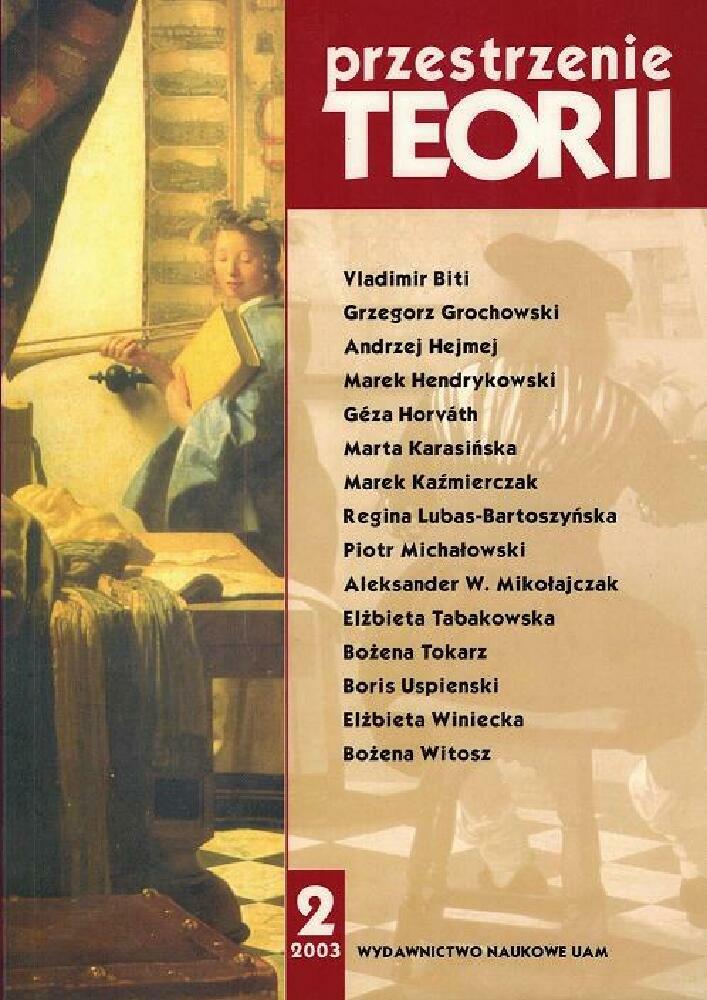Abstrakt
The paper analyses the phenomenon of iconicity in relation to its significance for literary theory. One of the key notions in modern philosophy of language and linguistics, iconicity is seen as a motivated interrelation beween form and meaning. In this, it is akin to mimesis - one of the basic concepts in theory of literature. Based on similarity, iconicity requires a conscious presence of an observer, who discovers and states the existence of similarity by reference to a tertium comparationis. It occurs as an effect of a mental process, as an interface bewteen semantics (the level of conventionalized meaning) and pragmatics (the level of contextual modifications of meaning). Thus it is intrinsically subjective: a representation of things as seen by a cognizant mind. Defined as a similarity between a conceptual structure and a linguistic form created by the mind, iconicity is manifested as sequentiality, proximity or quantity of elements; it is either imagic or diagrammatic. As a property of all texts and all discourse, it blurs the traditional distinction between "literary" and "non-literary" uses of language: the difference reduces to one of quantity, which "literatury" being characterised by a larger quantity of motivated interrelationships combined with a lower level of their conventionalization. The author concludes by claiming that - like mimesis - iconicity may be profitably discussed in terms of Roland Langacker's notion of subjectification, with the tertium comparationis present in the mind rher than in the external reality.Licencja
Autorzy
Autorzy tekstów przyjętych do publikacji w czasopiśmie „Przestrzeniach Teorii” są zobowiązani do wypełnienia, podpisania i odesłania na adres redakcji umowy o udzielenie nieodpłatnej licencji do utworów, z zobowiązaniem do udzielania sublicencji CC.
Zgodnie z umową, autorzy tekstów opublikowanych w czasopiśmie „Przestrzeniach Teorii” udzielają Uniwersytetowi im. Adama Mickiewicza w Poznaniu niewyłącznej i nieodpłatnej licencji oraz zezwalą na użycie sublicencji Creative Commons Attribution-NonCommercial-NoDerivatives 4.0 International (CC BY-NC-ND 4.0).
Autorzy zachowują prawa do dalszego, swobodnego rozporządzania utworem.
Autorzy, którzy wykorzystują w swoim tekście cudze utwory (np. ilustracje, fotografie) proszeni są o dostarczenie do redakcji czasopisma zgodę na publikację od uprawnionych podmiotów.
Użytkownicy
Zainteresowani użytkownicy internetu uprawnieni są do korzystania z utworów opublikowanych po 2015 roku „Przestrzeniach Teorii” tylko w calach niekomercyjnych, pod następującymi warunkami:
- uznanie autorstwa - obowiązek podania wraz z rozpowszechnionym utworem, informacji, o autorstwie, tytule, źródle (odnośniki do oryginalnego utworu, DOI) oraz samej licencji;
- bez tworzenia utworów zależnych - utwór musi być zachowany w oryginalnej postaci, nie można bez zgody twórcy rozpowszechniać np. tłumaczeń, opracowań.
Do wszystkich tekstów opublikowanych przed 2015 r. prawa autorskie są zastrzeżone.
Inne
Uniwersytet im. Adama Mickiewicza w Poznaniu zachowuje prawo do czasopisma jako całości (układ, forma graficzna, tytuł, projekt okładki, logo itp.).
